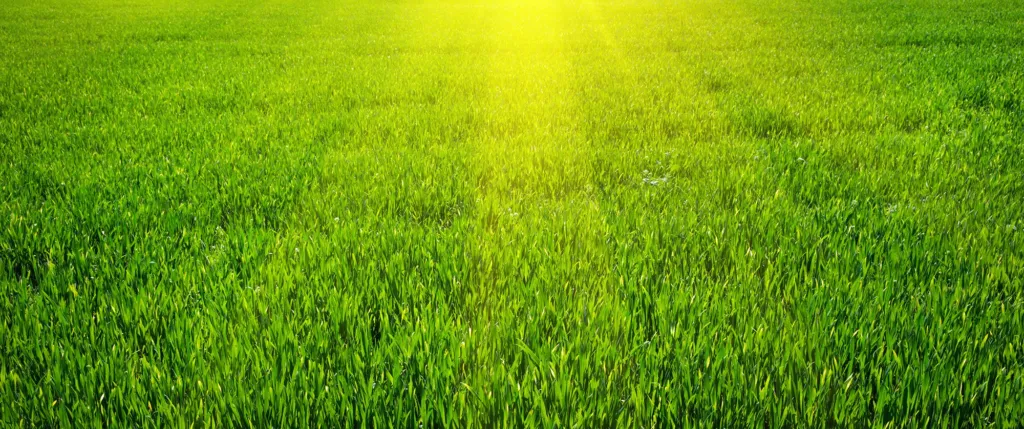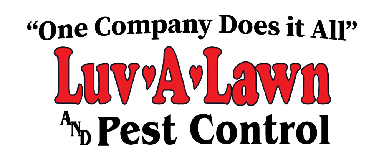
St. Augustine Grass Care June-August
St. Augustine grass is a fast-growing, warm-season turfgrass used extensively in Florida. St. Augustine Grass Care require some thought. It grows well on most well drained soils. For optimum quality, adequate irrigation and fertilization are required. St.Augustine grass is tolerant to saline irrigation and brackish water, and is the best shade tolerant grass suitable for Florida. Since most St. Augustine grass cultivars are quite sensitive to freezing temperatures, other turfgrasses may be more appropriate in the northern and panhandle areas of Florida. Also, St.Augustine grass is coarse (wide) in leaf texture and has poor wear tolerance, which may be undesirable for some purposes.
Cultivars of St. Augustine grass differ in their resistance to plant pests. Only the cultivars Floralawn and Floratam are tolerant to the southern chinch bug, a common turfgrass insect. Another insect, sod, webworm, and the fungal diseases brown patch and grey leaf spot can also cause damage.
As discussed in this section, proper lawn management practices are the best means of avoiding plant pest problems and obtaining high quality turfgrass.
What to do in June – August?
Mowing
Mow at 3 inches (as high as possible with a home rotary mower) on low-maintenance lawns or 2½ inches on higher-maintained ones. Use only a sharp, balanced mower blade and return clippings on the lawn unless the amount is excessive and clumping occurs. If clippings are excessive, allow them to dry in the sun and scatter them by remowing, blowing, or raking.
Fertilization
Fertilize with 1 pound of nitrogen per 1000 square feet (e.g., 1 pound nitrogen = 6.5 pounds 15–0–14 or 6.25 pounds 16–4–8 per 1000 square feet) in early July for higher-maintained areas. A slow release nitrogen source (e.g., IBDU, milorganite, SCU, urea formaldehyde, poly-coating sources) will extend nitrogen response and discourage rapid flushes of growth or nitrogen loss due to excessive rainfall. Using an iron source during summer is an alternate recommendation to nitrogen to provide desirable dark color without undesirable flush of growth. Using a quick-release nitrogen or water soluble nitrogen source at this time may encourage chinch bugs or disease development. Fertilizers without phosphorus (e.g., 15–0–14, 8–0–24) are acceptable during this time if soil tests indicate moderate to high levels of soil phosphorus. If excessive yellowing occurs, supplemental iron applications may be required.
Irrigation
Frequent, intense rainfall normally occurs during this period. Therefore, irrigate to prevent drought stress only on an as-needed basis. Apply water (¾ inch) as previously noted, and then wait until the turf shows signs of wilting (blue-gray color or footprinting occurs) before irrigating again.
Weed Control
The best method to control weeds is through a healthy, vigorous turf. Applying any postemergence herbicides during summer may result in objectionable turf injury.
St. Augustinegrass is damaged by certain herbicides (e.g., MSMA, DSMA). Follow label directions and use with caution. Do not apply herbicides unless grass and weeds are actively growing and not suffering from drought stress and air temperatures are below 85°F. See the section on weed control for specific recommendations.
Insect Control
Check for chinch bugs by the previously described method. If the turf turns yellow in spots or responds poorly to watering and fertilization, suspect root damage from white grubs. Check for white grubs (root feeders) by cutting three sides of a 1-foot square piece of sod about 2 inches deep with a spade/shovel at the edge of one of the yellow areas in the lawn. Lay back the sod and check for white C-shaped grubs. Apply an insecticide if two or three grubs are found per square foot. Check for additional insects such as armyworms, sod webworms and mole crickets by mixing 1 to 2 ounces of dishwashing soap in a 2-gallon sprinkling can full of water. Drench a 2 square foot area with this solution. If insects are present, they will surface in several minutes. (Refer to your local County Cooperative Extension Office for the latest control recommendations.) Read and follow all pesticide labels
